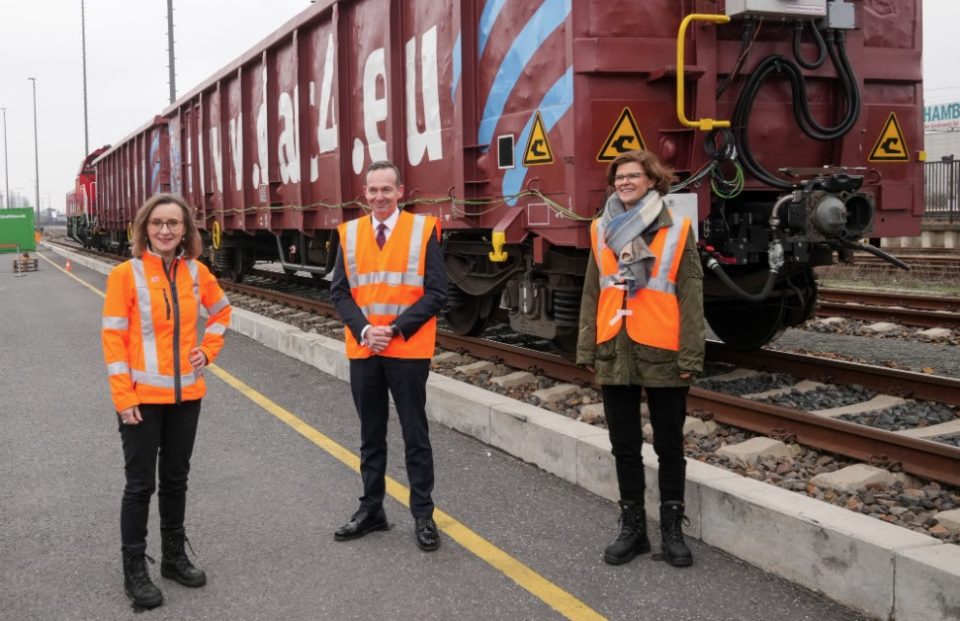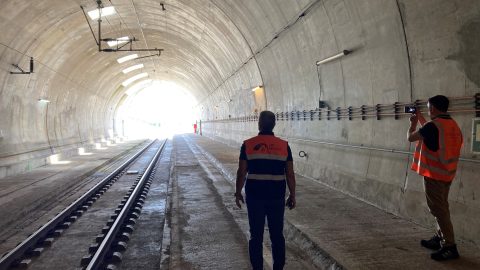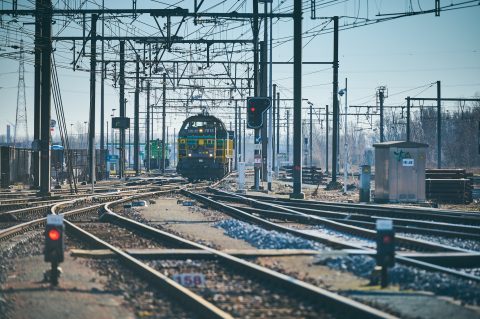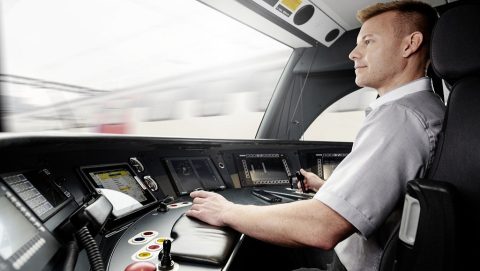European test run with Digital Automatic Coupling begins

In Berlin, a freight train equipped with a Digital Automatic Coupler has started a practical test run across Europe, lasting several months. German Federal Minister for Transport Volker Wissing gave the symbolic starting signal for the test programme on Wednesday, 19 January.
Digital Automatic Coupling (DAC) enables freight wagons to be coupled together automatically, without manual intervention by a person, which is now the standard practice. Brakes are also coupled automatically. DAC, therefore, enables faster, automated shunting processes. This increases the capacity of rail freight handling considerably.
Sigrid Nikutta, CEO of DB Cargo, pointed out that the new coupling changes the hard work in yards. “Some 70,000 times a day, when shunting, our employees now have to balance the coupling brackets, which can weigh up to twenty kilograms, at shoulder height to couple trains,” she said.
Goods trains can be longer and heavier
Goods trains can become longer and heavier with the new coupling technology. In addition, they can “swim along” better with the other train traffic, increasing the capacity of the track as a whole, said DB.
The test train is part of a research project in which the Federal Ministry for Digital Affairs and Transport (BMVI) is financing 13 million euros. A consortium of six companies is involved. In addition to DB and its subsidiary DB Cargo, these include the Swiss and Austrian freight railways SBB Cargo and Rail Cargo Austria and the wagon owners Ermewa, GATX Rail Europe, and VTG. The goal is the EU-wide introduction of DAC.

Goods train passes through several European countries
The DAC freight train will first run from Germany to Austria and then Switzerland. Other EU countries will follow. The DAC system is being tested in different driving situations than would be possible in Germany. These include steep inclines, sharper curves or diverse climatic conditions. The test drive should lead DAC to series production, enabling a wider rollout.
The final assessment of the field tests will be completed at the end of this year. In recent months, trip and coupling tests have been carried out on various rail links and marshalling yards in Germany.
Smart and fast
The introduction of DAC solves a problem that has existed for more than 70 years with the EU-wide introduction of a uniform automatic coupling system, according to Volker Wissing, Federal Minister for Digital Affairs and Transport. “This much-needed transformation can not wait another day.”
Daniela Gerd tom Markotten, DB Board Member for Digitalisation and Technology: “DAC makes freight wagons smart and fast: when coupling them, but also when running. With this technology, not only can more freight wagons run on the rails, but it also enables densification of train traffic to the benefit of all.”
Also read:
You just read one of our premium articles free of charge
Want full access? Take advantage of our exclusive offer





